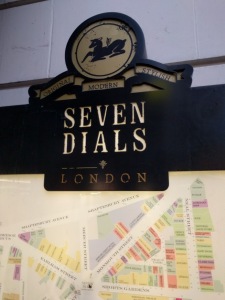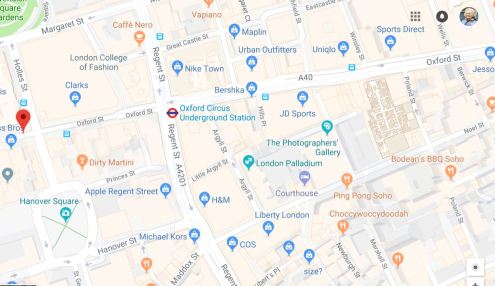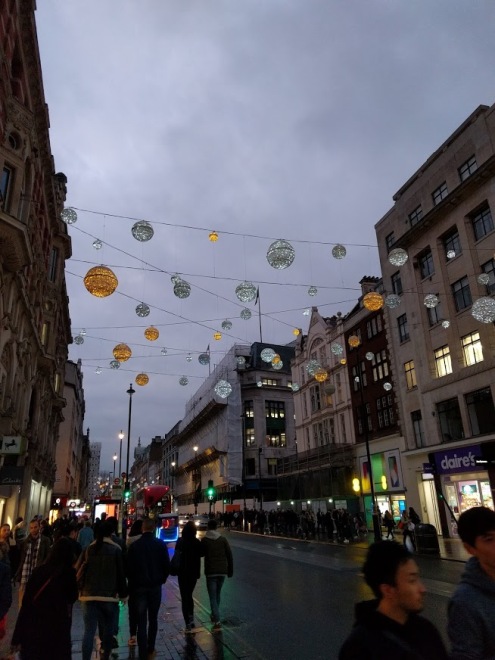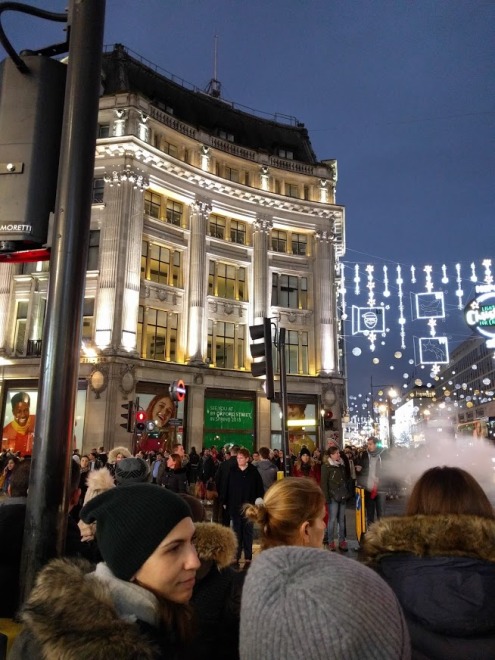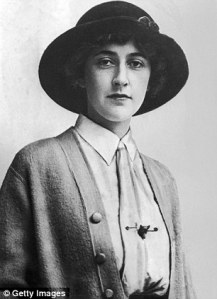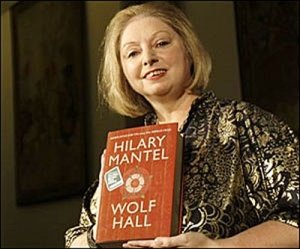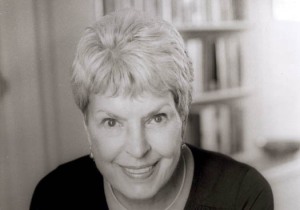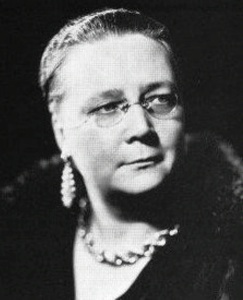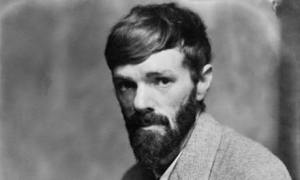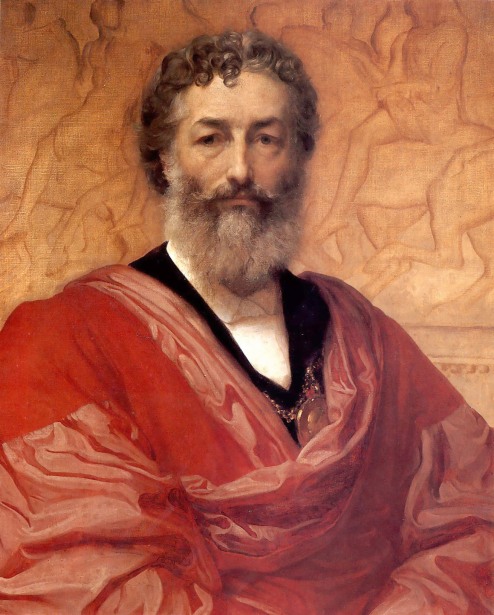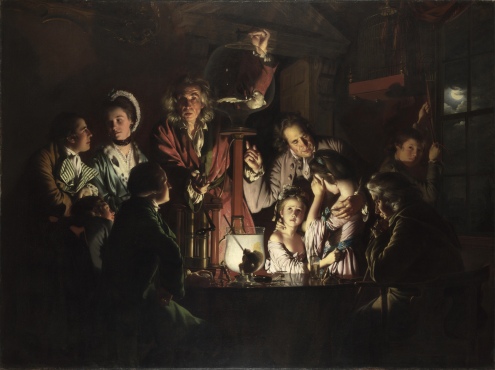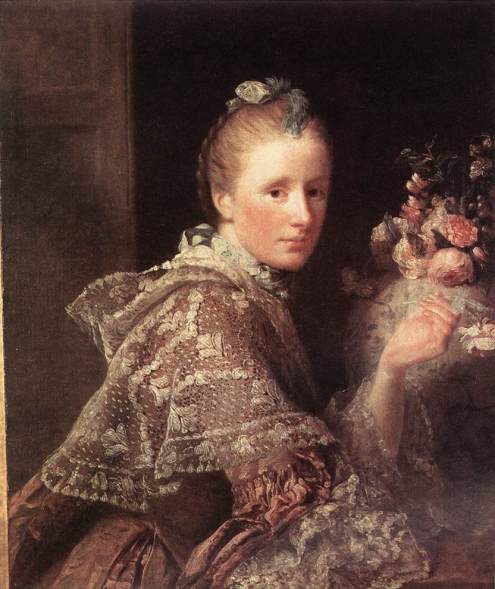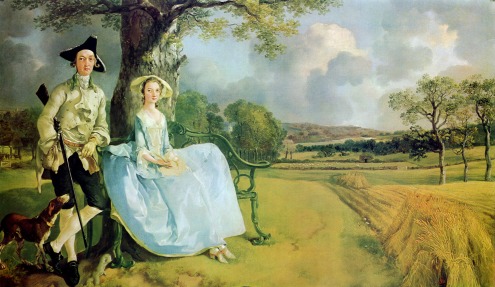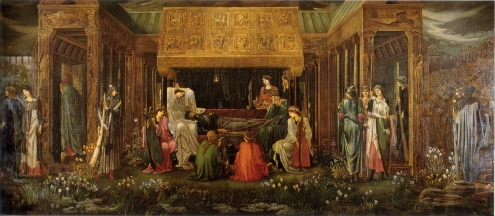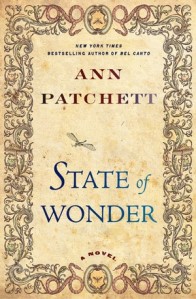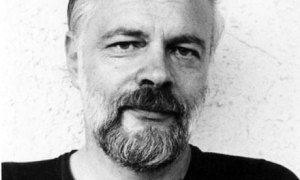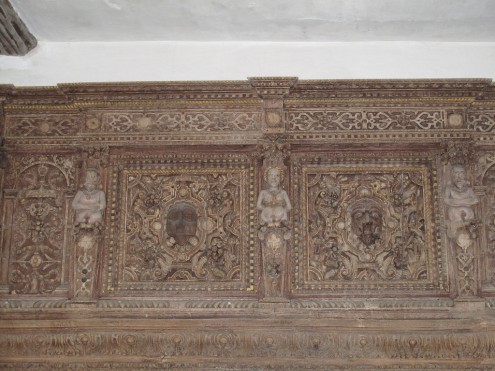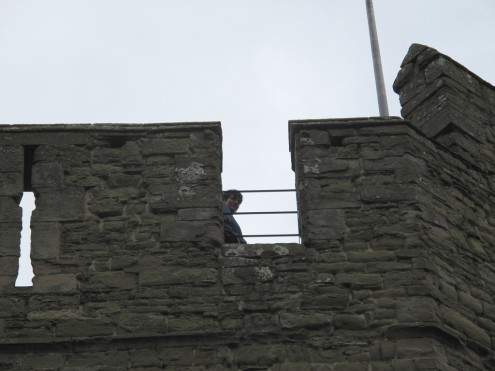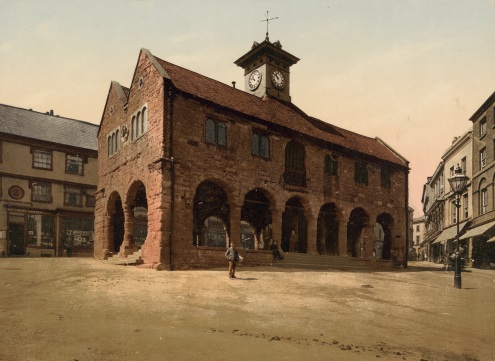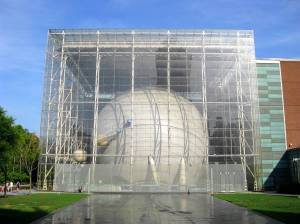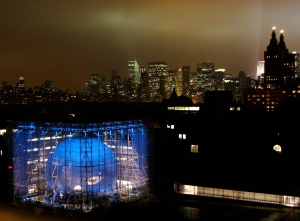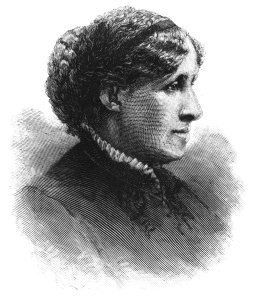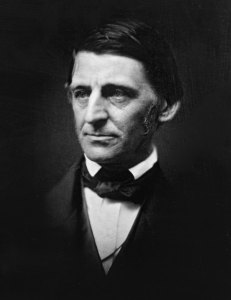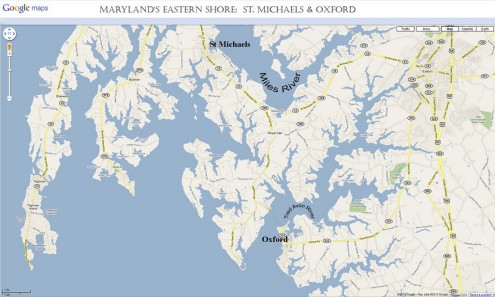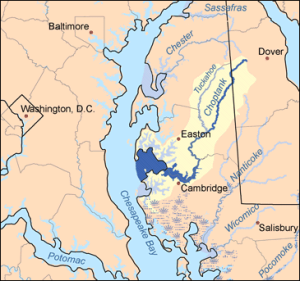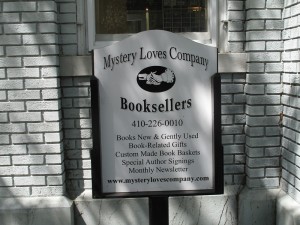London, Day One: Christmas crowds and Christmas lights
As I was adjusting to jet lag and a general sense of dislocation, my brother, sister-in-law, and I explored the neighborhood. This was Bloomsbury.
We were staying at the Bloomsbury and the Radisson Blu Edwardian Bloomsbury Street Hotels respectively – barely a block from the imposing edifice of the British Museum on Great Russell Street.
That night, we walked to the storied Seven Dials intersection,  then along Oxford Street to Regent Street. This is the intersection known as Oxford Circus. I was not always sure where I was at each point in our stroll, but I know the streets were thronged with holiday shoppers and the lights were dazzling.
then along Oxford Street to Regent Street. This is the intersection known as Oxford Circus. I was not always sure where I was at each point in our stroll, but I know the streets were thronged with holiday shoppers and the lights were dazzling.
In the course of our peregrinations, we ended up at London’s new flagship Apple store on Regent Street (see map above). This was not entirely unplanned; my brother Richard works for the company at its headquarters in Cupertino, California.
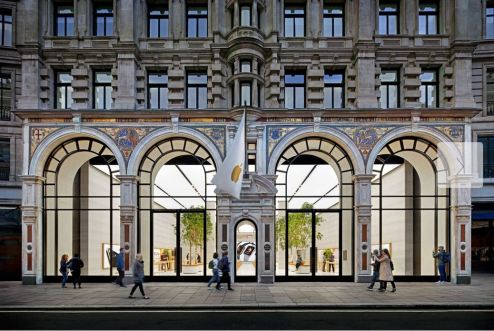 Unlike this depiction, the store was packed that night. a week ago last Sunday.
Unlike this depiction, the store was packed that night. a week ago last Sunday.
It’s an impressively designed store, spacious, beautifully detailed, and very green.
Now, back to the streets and the lights. These pictures (plus one video) were taken under less than optimal conditions, but I still think they convey a sense of the festive and beautiful ambience that was very much in evidence that night:
The Pale Horse by Agatha Christie: a book discussion. Part One: background (but first – a heartfelt digression)
As last Tuesday night’s meeting got under way, we members of Usual Suspects were treated first to a recap of Marge’s recent and rather fabulous trip to England. Not only did she savor the many joys of literary London, she also attended a star studded Crimefest Convention in Bristol. This is the same event that we both enjoyed last year, but this year’s Crimefest was truly stellar: Lee Child! Sue Grafton! And most amazingly, the reigning queen of British crime fiction, P.D. James! Marge’s tour also took her to Oxford, where she fell in love with the city of the dreaming spires and got to spend some time in the company of Colin Dexter, author of the peerless Inspector Morse novels.. (Ron and I enjoyed this same memorable experience in 2006, while on the Smithsonian Tour, Classic Mystery Lover’s England.)
All right – I must stop myself getting sad and dreamy-eyed, as I invariably do when remembering this, and proceed to the matter at hand…. Oh but first, I really must offer up a soundtrack. This video tribute to Barrington Pheloung begins with music he composed for the film Shopgirl. You’ll hear the Morse theme at about two minutes and twenty seconds in:
*********************************
I began Tuesday night’s discussion of The Pale Horse began with a brief survey of the life of Agatha Christie. It was not my intention to delve into too much detail, as the general facts of her life are fairly well known and easy to access. Still, I admit I was knocked sideways by the fact that Carol rattled off from memory the name Roedean, this being the boarding school attended by Agatha’s older sister Madge. She was also well up on the arcana of Agatha’s complex familial antecedents. Well done, Carol!
Agatha Christie was born in 1890 in Torquay,on Devon’s south coast.
Lovely Torquay – Ron and I were first there in 2006, and then again, last year. (The first photo is of the lobby of the Imperial Hotel, where we stayed in 2006.) 
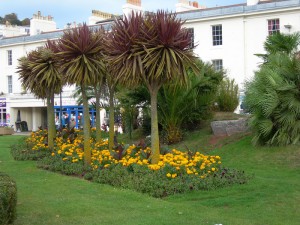
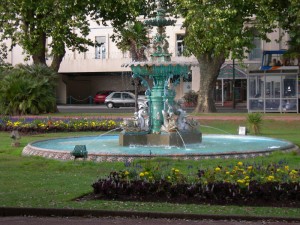
Madge was eleven years older than Agatha; brother Monty was ten years older. So in some respects, Agatha’s upbringing resembled that of an only child. In addition, her father, the American born Frederick Alvah Miller, died in 1901, when Agatha was eleven years old. As a result, she and her mother Clara, already close, grew even closer. Clara had some eccentric notions concerning education; hence, Agatha’s was something of a catch-as-catch-can affair. As Agatha grew to young womanhood, her chief aim was to get married. As Joan Acocella tells it in her 2010 New Yorker profile: “All she wanted was a husband, and when she was twenty-four she got one: the dashing Archie Christie, a member of the Royal Flying Corps.” After a rather turbulent courtship, Archie and Agatha were wed. Archie went off to fight in France; Agatha went off to work in a hospital dispensary in Torquay, a fateful job choice as it later turned out.
When Archie came back from the war, he and Agatha at first settled into a comfortable domesticity. Agatha gave birth to their daughter Rosalind. But Archie was proving to be a less than ideal husband. In her autobiography, Agatha quotes him as saying : ” I did tell you once, long ago, that I hate it when people are ill or unhappy-it spoils everything for me.” Unfortunately for both of them, Agatha’s mother Clara died in 1926. As Joan Acocella wryly observes, this devastating loss had the effect of “…plunging her daughter into the kind of sorrow that Archie found so obstructive to his happiness.” Sure enough,Archie sought consolation elsewhere. He soon informed Agatha that he was in love with another woman and wanted a divorce. This crisis in her personal life prompted Agatha Christie to decide on a strange course of action, one which has been endless scrutinized and analyzed for decades: she disappeared.
She was gone for eleven days. Eventually it transpired that she had absconded to the Old Swan Hotel in the spa town of Harrogate, in Yorkshire. She checked in under an assumed name, giving as her surname ‘Neele,’ the last name of Archie’s new love. Her disappearance was sensational.
The Surrey constabulary, enlarged to five hundred men, combed the downs and dragged the ponds in the area around her abandoned car. When the weekend came, they were joined by a mob of volunteers, plus bloodhounds. Ice-cream venders set up stands to serve the crowd. Most of the major newspapers carried a daily story on the matter. Christie’s fellow-guests at the hotel looked at the photos of her in the papers, but none of them made the connection. Indeed, she later recalled playing bridge with them and discussing the strange case of the missing novelist.
Christie was eventually identified by members of the hotel’s band. What followed was a great deal of speculation. Had Christie experienced some kind of amnesia? Was this a desperate bid to regain Archie’s affection? Or was it a publicity stunt, pure and simple? Again, Joan Acocella:
….if Agatha’s flight was an effort to get the attention of the public, it was successful. She had produced six detective novels by that time, the last of which, “The Murder of Roger Ackroyd” (1926), was extremely popular. That success, in part, was why her disappearance received so much attention. Conversely, her disappearance, with its interesting link to detective fiction, made her a celebrity. Her earlier novels were reprinted, and they sold out.
Christie makes no mention of this notorious episode in her autobiography. 
(The publicity stunt rationale was deemed unlikely by the Suspects. The feeling was that Agatha’s natural shyness would have prevented her embarking on this gambit with such a calculating purpose in view.)
A word about Harrogate before we leave this subject: I’ve visited there twice. once in 2005 and again in 2007. It’s a lovely place in and of itself, and also an ideal base for investigating the nearby attractions of North Yorkshire: 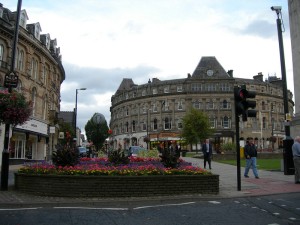


Valley Gardens in Harrogate, one of the most beautiful city parks I’ve ever seen: 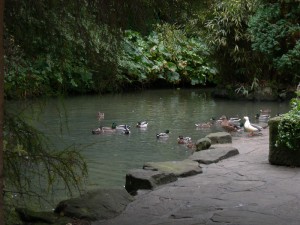


Naturally I wandered through the lobby of the Old Swan Hotel, soaking up the ambiance, as Agatha Christie must have done all those years ago…. 
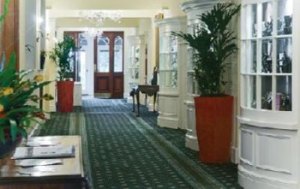
*******************************
More about the life of Agatha Christie in a subsequent post. For now, I’d like to make a start on:  . I first read this novel (and wrote about it in this space) in 2010. When I asked the Suspects if they’d discussed a Christie work lately, they replied in the negative. The Pale Horse struck me as a good bet for a discussion – though just how good, I hadn’t anticipated.
. I first read this novel (and wrote about it in this space) in 2010. When I asked the Suspects if they’d discussed a Christie work lately, they replied in the negative. The Pale Horse struck me as a good bet for a discussion – though just how good, I hadn’t anticipated.
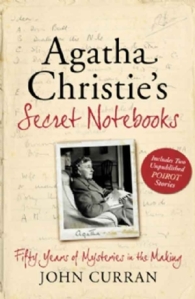
 In Agatha Christie’s Secret Notebooks, John Curran states that The Pale Horse is one of the high marks of the last fifteen years of Christie’s writing life. He goes on to say that the novel “…has a horribly plausible plot, a very unusual poison and a genuine feeling of menace over and above the usual whodunit element.” And in The Life and Crimes of Agatha Christie, Charles Osborne comments: “The Pale Horse is a remarkably fresh and imaginative creation for a writer entering her seventies.”
In Agatha Christie’s Secret Notebooks, John Curran states that The Pale Horse is one of the high marks of the last fifteen years of Christie’s writing life. He goes on to say that the novel “…has a horribly plausible plot, a very unusual poison and a genuine feeling of menace over and above the usual whodunit element.” And in The Life and Crimes of Agatha Christie, Charles Osborne comments: “The Pale Horse is a remarkably fresh and imaginative creation for a writer entering her seventies.”
The Pale Horse possesses a beautiful structure, like an edifice rising in a slow and stately manner from bare ground. This dark tale of a fiendish conspiracy involves numerous disparate players, and Christie places the various components before the reader with extraordinary skill and timing. She’s certainly an expert at misdirection, but here she does something even more subtle: she embeds crucial facts in the most prosaic statements and situations. The names of characters who will ultimately play a major role in the story are sandwiched between those of comparative unimportance. Vital clues appear right from the beginning, in the most innocent-seeming settings. It’s so easy to miss them. I certainly did, on my first encounter with this novel.
A word at this juncture about the “very unusual poison” alluded to above by John Curran. In an effort to avoid ‘spoilers,’ I’m not going to name it here. I will say that it occupies an entire chapter in Deborah Blum’s terrific book The Poisoner’s Handbook. (We Suspects had a great time discussing this work at our June meeting.) In addition, on her blog Speakeasy Science, Blum tells the fascinating story of a crime committed just last year in Princeton, New Jersey, that involved the use of this same substance.
There’s quite a bit more to be said about our discussion of The Pale Horse. Part Two of this post will, I hope, not be long in coming. Meanwhile, I’d like to say a bit more at this point about sources and background.
The full text of Joan Acocella’s New Yorker piece on Agatha Christie can be found at Gale’s Biography in Context. This database can be accessed through the library’s website. Go to the home page; there, you will see the ‘How Do I’ drop box’ at the upper right, beneath ‘New & Hot Items’ and ‘Classes & Events.’ Click on the downward arrow and select ‘Use Electronic Resources.’ (You’ll find it about halfway down the list of options.) Select ‘List of Databases’ near the top of the page. Select ‘Biography’ at top left. Then select ‘Biographies’ at the top of the page. Type ‘Agatha Christie’ into the search box. Joan Acocella’s article is entitled “Queen of Crime;” the link to it is in the left hand column, second from the top. At some point in this process, you may need to enter your library card number. (One must jump through all these hoops, alas; the New Yorker keeps nearly all of its content behind a pay wall.)
What you won’t see is the rather startling photo that accompanied the article. It was taken by Lord Snowden in 1974, two years before Christie’s death: 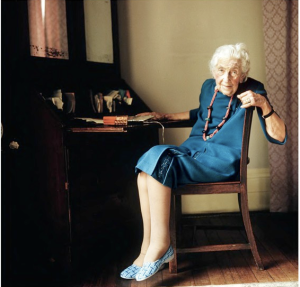
There are other items of interest at Biography in Context’s Agatha Christie page. Right under ‘Queen of Crime’ you’ll find a link to the NPR piece about the tapes made by Christie that were found at Greenway in 2008 by her grandson Matthew Prichard. (What treasures were unearthed while Greenway was being readied to hand over to the National Trust!) You can go directly to the NPR segment, where you can listen to portions of those tapes. If you do so, you’ll note that the possibility is raised of a meeting between Hercule Poirot and Miss Marple. One senses that the very idea irritated Dame Agatha. “But why should they meet?” she exclaims indignantly. ” I’m sure they would not like meeting at all.” Commentator Lynn Neary adds: “And no doubt, Agatha Christie knew exactly what she was talking about.”
Ah, but we Agatha aficionados know differently. They did meet – in Torquay in 1990, at the Agathe Christie Centenary Celebration. You can see for yourself. The meeting of the two famed fictional protagonists occurs about eighteen minutes in on this promotional video:
This video also made we wonder whether an annual Agatha Christie Festival has in fact been successfully established at Torquay. Judging by this next video, the answer is yes:
*****************************
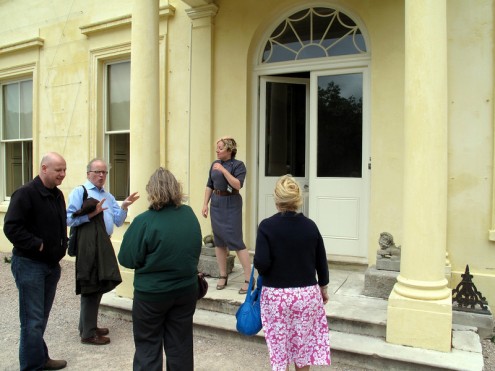
It’s 2011, and we’re about to enter Greenway. With our group are Adrian Muller, far left, one of the chief organizers of Crimefest; author and Agatha Christie scholar John Curran, standing beside Adrian; and farthest to the right, in the pink and white print dress, Blue Badge Guide extraordinaire Roz Hutchinson
O, to be in England….
Last November, there appeared in Harper’s Magazine an article entitled “Broken Britain” by journalist Ed Vulliamy. Written partly in response to the rioting that occurred in August, the piece had virtually nothing good to say about the current state of things in that beleaguered island nation:
On the worst day of street violence, stock values plunged to their lowest all year. A few days after the riots had ended, it was revealed that one in five Britons between the ages of sixteen and twenty-four are unemployed, and that more applicants for university and college would be turned away than ever before. Cameron spoke of a “slow-motion moral collapse” of the country he used to call, when in opposition, “broken Britain.” He insisted on the need to confront “the attitudes and assumptions that have brought parts of our society to this shocking state,” including “irresponsibility, selfishness, behaving as if your choices had no consequences.”He was as virtuous as he was four-square, despite his porcelain complexion and weak chin. But he himself has been tainted by scandal….
On it went, page after page of unrelentingly negative reportage. As well as government officials, members of the royal family were included in the smack down. I would say it was an almost gleeful piling on, were the tone not half so bitter:
Britain itself is a corporate mediocrity, a place where the customer is almost always wrong and people always seem to be working but not much gets done very well. Ineptitude is packaged with a wrapping of present participles, as though an advertising agency had taken over the government and the economy alike,which, in a way, it has: British Gas is“Looking after your world,” British Telecom is “Bringing it all together for London 2012,” while the Metropolitan Police are “Working together for a safer London.” But behind the silly slogans, a combination of greed, incompetence, and increasing authoritarianism is making Britain not only an inefficient but a disagreeable place in which to live—a country now characterized by lost good manners, opportunism and prying.
After reading this article, I was depressed for days. Did this mean that as a visitor to Britain four times in the past eight years, I was merely a starry-eyed, gulled tourist, one who’d come away with the impression of a people who were alive and vibrant, and a countryside whose beauty was almost unearthly?
Now here comes Niall Ferguson, writing in a recent issue of Newsweek, to answer my question somewhat regretfully in the affirmative. Ferguson doesn’t come close to matching Vulliamy’s vituperative, excoriating tone. Nevertheless, he is anxious for, and bewildered by, his homeland, which he compares to fin-de-siècle Vienna in its last throes of ‘nervous splendor:’
In particular, Ferguson declares himself astonished by the lavish plans for the celebration of Queen Elizabeth’s Diamond Jubilee:
Last week I watched an astonishing number of bandsmen in bearskin hats and bright red tunics rehearsing for the jubilee celebrations, which culminate next month. Stuck in the resulting traffic, I had time to ponder why, at a time of deep cuts in defense spending, Britain can still afford the world’s finest military bands.
“Austerity” has become the watchword of David Cameron’s premiership as he grapples with the huge deficits run up by his Labour predecessors. Yet there is nothing austere about the Diamond Jubilee. On June 3, according to the official website, “Up to a thousand boats will muster on the river as the Queen prepares to lead one of the largest flotillas ever seen on the River Thames.”
Ferguson does make this concession: “Like Vienna a century ago, London today is one of the world’s most creative cities.” He goes on to name Ian McEwan as his favorite novelist. Fair enough; I too am a McEwan fan, though Solar by and large did not work for me. At the moment, I’m trembling with anticipation at the prospect of reading Bring Up the Bodies, Hilary Mantel’s sequel to the harrowing and spectacular Wolf Hall. (In Slate, William Georgiades posted a review entitled “Hilary Mantel’s Heart of Stone;” the piece is subtitled: “A brilliant follow-up to Wolf Hall from an author whose anger would rip a roof off.'”)
Meanwhile I’m still working my way though The Last Pre-Raphaelite, Fiona MacCarthy’s splendid biography of Edward Burne-Jones. At the same time, I’m happily immersed in Peter Robinson’s Before the Poison. Oh – and I am having the jolliest time with John Sutherland’s Lives of the Novelists – about which more, in a later post.
Fact is, I’ve read so many fantastic books by and about British authors lately that I could not begin to enumerate them. How do I love the British writers? Let me count the ways:
Of course, this is merely a modest selection from a prodigious list. A good source of information about British and Commonwealth authors can be found at the British Council’s Literature site. (I’d also like to suggest my post entitled Six Gifted Englishwomen.)
I would have to be very naive and oblivious not to acknowledge – especially given the riots of last August – that there is plenty of grief and anger in Britain today, for a variety of reasons. I just got upset all over again by several of the opinion pieces at the site What England Means To Me. It is heartbreaking to read articles like these; their authors are so nearly despairing. So I offer what I hope may act to some small degree as a counterweight to this pain. Here is a sampling of art, music, and film from the British Isles, a place I love deeply:
Finally, there’s some fascinating material in my post on The History of British Art by Andrew Graham-Dixon.
**********************
*********************
Sir Laurence Olivier as Henry V, in Shakespeare’s history play:
***********************
***********************
**********************
**********************
**********************
**********************
*******************
(The Yorkshire adventure was actually my adventure, in 2005 – my first trip to the UK in twenty years. The music is “The Lark Ascending,” by Ralph Vaughan Williams.)

Whitby: Folk go about their shopping in the town, while the ruins of Whitby Abbey, founded in the seventh century AD, brood above them
Scenes from our recent trip to the Welsh borders, a place off incredibly, unspoiled beauty:
For Royal watchers, here are two sites you might enjoy visiting: The Monarchist, and the official website for Queen Elizabeth’s Diamond Jubilee.
*********************
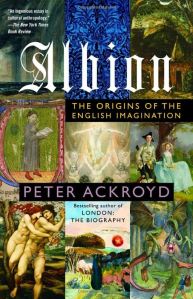 In Albion: The Origins of the English Imagination, Peter Ackroyd is both informative and eloquent on the subject of the Arthurian legends, in a chapter entitled “He Is Not Dead:”
In Albion: The Origins of the English Imagination, Peter Ackroyd is both informative and eloquent on the subject of the Arthurian legends, in a chapter entitled “He Is Not Dead:”
The sleep of Arthur in the unknown region of Avalon has…been related to Plutarch’s invocation of the old British belief that the great god Cronos still sleeps upon an island surrounded by waters. This in turn has been related to the myth of the original Albion, which has been associated with the legend of Atlantis; the Druids were supposed to believe that Albion, the spirit or embodiment of the English, was an original portion of the lost continent.
Ackroyd then cautions: “It is a very rich, not to say heady, brew. Any attempt to drink it will inevitably lead to numbness and disorientation.” This comes later in the same chapter:
The story of Arthur has always been striated with sensations of loss and transitoriness, which may well account for its central place within the English imagination; the native sensibility is touched with melancholy…and the sad fate of Arthur and his kingdom corresponds to that national mood. There is something, too, of determination and endurance within this dominant sensation….That combination of bravery and fatalism, endurance and understatement, is the defining mood of Arthurian legend.
****************************
Finally, on a lighter note: a clip from one of my favorite episodes of Chef! – my favorite British comedy, and a short, gently satirical comedy entitled Duel at Blood Creek.
***************************
Yet another delightful (and invigorating) lunch with intellectuals
Six of us try to get together once a month. The conversation ranges widely, from politics, to health and medical matters (the mandate here is to keep it brief), to grandchildren (same mandate!), to computers, electronic devices, and e-readers, about which some of us remain deeply ambivalent (same mandate again!), to travel, to items of local interest – and to books, always to books.
This past Monday I was bursting with enthusiasm for two terrific books I just finished: State of Wonder by Ann Patchett and The Greater Journey by David McCullough. The McCullough in particular I really loved. In fact, I hated for it to end. All those fascinating stories, equally fascinating people, coming to Paris and recording their impressions of this great cultural capital. Ah well – more about this embarrassment of riches later.
None of my four luncheon companions had read The Greater Journey, but two, Kay and Angie, had read the Ann Patchett novel. (Ann is now in the process of reading it.) Kay agreed with me that it was excellent; Angie had reservations. I was so over the top enthusiastic about the book that I could hardly credit the latter reaction. (Isn’t that often the way, in the first blush of rapturous reading – “You simply MUST love this as much as I did!”) More about State of Wonder in a subsequent post – and about Angie’s reservations, which are cogently set forth in her Amazon review.
Kay told us about her recent trip to Yellowstone and Glacier National Park. She was telling us about the Going-to-the-Sun Road, a wonderfully named byway that I confess I’d never heard of. Kay also recommended Free Fire by C.J. Box.  This novel, one in the author’s Joe Pickett series, takes place in Yellowstone. Kay has recommended this book to me before and is probably waiting patiently for me to break down and read it! I note that the library is now getting Box’s novels on CD, including this one, so I have duly reserved it. C.J. Box is a fine writer; his terrific standalone Blue Heaven won the Edgar for best novel of 2008.
This novel, one in the author’s Joe Pickett series, takes place in Yellowstone. Kay has recommended this book to me before and is probably waiting patiently for me to break down and read it! I note that the library is now getting Box’s novels on CD, including this one, so I have duly reserved it. C.J. Box is a fine writer; his terrific standalone Blue Heaven won the Edgar for best novel of 2008.
Once again, we were reminded of how pleasurable it is to read fiction that’s set in your travel destination. I experienced that pleasure during our British sojourn this past May with Phil Rickman’s Midwinter of the Spirit, Edward Marston‘s The Dragons of Archenfield, and Kate Charles’s luminous ecclesiastical novel Appointed To Die. For me, similar confluences occurred with Jane Langton’s God in Concord, read while in historic Concord Massachusetts; Michael Dibdin’s Cosi Fan Tutti, read – or rather re-read – while in Naples, Italy; Washington Irving’s Legend of Sleepy Hollow, read while staying in a B&B in the beautiful Hudson River Valley; and of course, the Navajo mysteries of the great Tony Hillerman, read while in New Mexico. In point of fact, those books were what made me want to see the aptly nicknamed Land of Enchantment in the first place. (Nevada Barr was also mentioned in this context.)
I can recommend two sites for finding books set in a specific locale: Longitude Books and the location index on stopyourekillingme.com.
Angie belongs to two book clubs: one reads philosophy; the other, science fiction. (Have I got that right, Angie?) She recommended the latest Hugo Award winner: Blackout/All Clear by Connie Willis. An article in the Guardian newspaper describes this as “two volume time travel sequence” and praised Willis’s depiction of London during the Blitz.
I mentioned that for the first time in many years, I had recently bought a copy of Fantasy & Science Fiction, formerly known as The Magazine of Fantasy & Science Fiction. 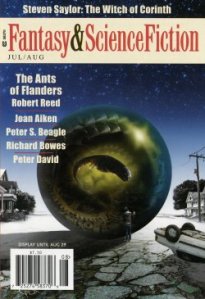 I had obtained the July/August issue because it featured a story by Steven Saylor, one of my favorite authors of historical fiction. But when I actually held the digest-sized magazine in my hands and fingered the raspy (pulpy?) paper on which it’s printed, I found myself assailed by distant memories. F&SF, as it is sometimes called, began publishing in 1949. My brother and I used to read it when we were kids.
I had obtained the July/August issue because it featured a story by Steven Saylor, one of my favorite authors of historical fiction. But when I actually held the digest-sized magazine in my hands and fingered the raspy (pulpy?) paper on which it’s printed, I found myself assailed by distant memories. F&SF, as it is sometimes called, began publishing in 1949. My brother and I used to read it when we were kids.
As it turns out, F&SF put out a sixtieth anniversary edition in 2009:  . I got it from the library. And there they were, the names of some of my favorites, past and present, emblazoned on the cover:
. I got it from the library. And there they were, the names of some of my favorites, past and present, emblazoned on the cover:
Angie frequently recommends science fiction to our group. I for one have not followed up on these recommendations; perhaps, the time has come…
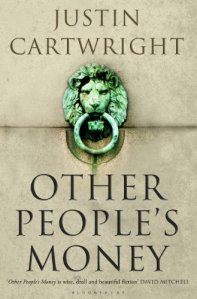 It’s always a delight when someone discovers an author that you already know and like. Ann had just read Other People’s Money by Justin Cartwright and enjoyed it enough to want to read other works by this author. I immediately suggested The Promise of Happiness and To Heaven By Water. An earlier Cartwright title that I also liked very much is Interior. One thing I particularly recall about that novel is that it had a terrific ending, one that was exactly apposite. Since so many modern novels don’t achieve a satisfying culmination, I am always pleased to find one that does.
It’s always a delight when someone discovers an author that you already know and like. Ann had just read Other People’s Money by Justin Cartwright and enjoyed it enough to want to read other works by this author. I immediately suggested The Promise of Happiness and To Heaven By Water. An earlier Cartwright title that I also liked very much is Interior. One thing I particularly recall about that novel is that it had a terrific ending, one that was exactly apposite. Since so many modern novels don’t achieve a satisfying culmination, I am always pleased to find one that does.
I’m sure I’ve left out some books and some topics. Feel free to remind me in the comment section, ladies. Meanwhile, I look forward as always to our next get-together.
Stokesay Castle in Shropshire: “…quite simply the finest and best preserved fortified medieval manor house in England.”
By the end of the thirteenth century a wool merchant named Laurence of Ludlow had become one of England’s richest men. In the way of the wealthy throughout history, he wished for a material representation that would stand as a signal to the world of his new found prosperity. This was the result of that quest:
I could wax philosophical about the passage of time, the persistence of memory, ghosts in ruined castles and abbeys, but others have already done so with far more eloquence than I could ever summon. Instead, I offer our pictures as mute testimony to all of the above:
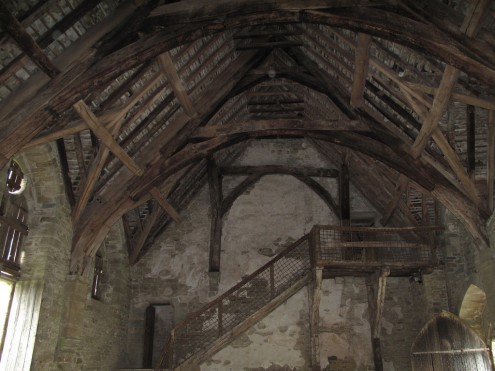
The majestic Hall. Writing in the English Heritage Guidebook, Henry Summerson tells us that "The three great wooden arches over the hall are a rare survival for this period." (The third arch is just out of range of the camera.) Built in 1291, it stands essentially unaltered since that time.
Look out beyond the few outbuildings: the countryside, green and undulating, stretches out, seemingly without end.
If you came this way,
Taking the route you would be likely to take
From the place you would be likely to come from,
If you came this way in may time, you would find the hedges
White again, in May, with voluptuary sweetness.
It would be the same at the end of the journey,
If you came at night like a broken king,
If you came by day not knowing what you came for,
It would be the same, when you leave the rough road
And turn behind the pig-sty to the dull facade
And the tombstone. And what you thought you came for
Is only a shell, a husk of meaning
From which the purpose breaks only when it is fulfilled
If at all. Either you had no purpose
Or the purpose is beyond the end you figured
And is altered in fulfilment. There are other places
Which also are the world’s end, some at the sea jaws,
Or over a dark lake, in a desert or a city—
But this is the nearest, in place and time,
Now and in England.Little Gidding, T.S. Eliot
************************************************
Click here for more on the history of Stokesay Castle, and here for more visuals.
A walk through Ross
Upon our return from Hereford, we were invited to take a walking tour of Ross on Wye, the pretty market town that was to be our headquarters while we explored the Wye Valley region. You cannot be in Ross for long without hearing about John Kyrle (1637-1724).. Called “the Man of Ross” by Alexander Pope, Kyrle was a wealthy and selfless benefactor whose philanthropy improved immensely the lives of Ross’s inhabitants. His legacy can be found throughout the town.
Kyrle was instrumental in establishing The Prospect, a lovely park overlooking the Wye River:
The Church of St. Mary the Virgin dates from the early 1300’s. Built on one of the highest points in town, its spire can be seen for miles around:
The Plague Cross commemorates the 315 citizens of Ross who died of the Plague in 1637. The victims were buried in a “plague pit” nearby, at night and without coffins:
Ross has a beautifully preserved Market House. It was built between 1650 and 1654 and replaced an older structure, probably made of wood.
This trip was very much about books, and little Ross on Wye, population just over 10,000 according to 2001 census figures, boasts two independent bookstores, one new and one used.
 In Ross Old Books I found Make Death Love Me, the first novel I ever read by Ruth Rendell. Lately I’ve been wanting to revisit it, but this wish has been frustrated by the fact that the local library no longer owns it and it’s out of print to boot.
In Ross Old Books I found Make Death Love Me, the first novel I ever read by Ruth Rendell. Lately I’ve been wanting to revisit it, but this wish has been frustrated by the fact that the local library no longer owns it and it’s out of print to boot. 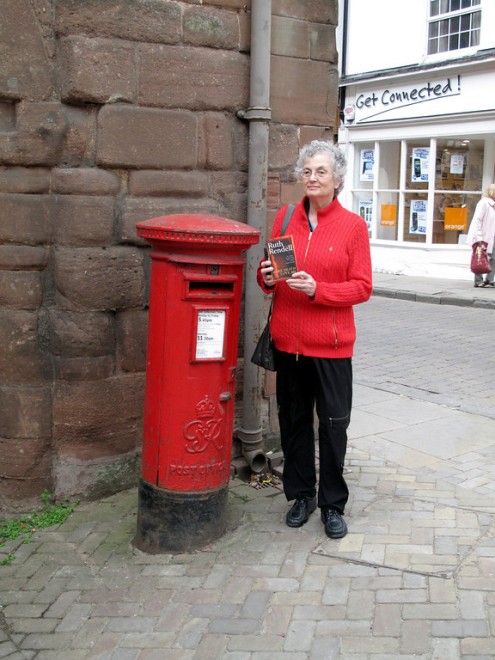 Along with others on the tour, I enjoyed browsing in Rossiter’s. Phil Rickman had told us that he’d dropped several copies of his titles off there recently, so we took full advantage of that fact!
Along with others on the tour, I enjoyed browsing in Rossiter’s. Phil Rickman had told us that he’d dropped several copies of his titles off there recently, so we took full advantage of that fact!  Here’s a short piece on the shop that appeared last month in The Telegraph.
Here’s a short piece on the shop that appeared last month in The Telegraph.
Wyenotccom is a very rich source for information on the Wye Valley. The site features plenty of visuals, including these videos of the May Day celebrations that take place each year on May Hill, a prominent landmark between Gloucester and Ross on Wye:
******************************
This map shows the location of Ross on Wye, as well as Hereford, Shrewsbury, Ludlow, Monmouth, and Bristol, all of which were visited by us on this trip. (Click to enlarge.)
If you’re confused as to where the border between Wales and England is, so were we for much of the trip. But as we wove our way through the Welsh border country, we did see signs such as this from time to time:
The first sighting caused me to cry out and clap my hands: a first, and a beautiful new country for us!
A sojourn in New York City begins at The American Museum of Natural History
When my friend Helene and I are together, the talk of books is inexhaustible. I always come away with urgent recommendations that grow out of whatever we’ve been talking about. This time it was Russia and the Russians, and our perennial fascination with medieval Europe. I was receptive to the suggestion of the Stoppard play, having recently seen and hugely enjoyed his Arcadia. The Lewis title was new to me. I confess that I’ve had trouble reading this venerated author in the past, but I shall give it another go with this book.
I began my first full day in the city by going to the American Museum of Natural History. This is a place I used to visit as a child. I hadn’t been back in many years, but at Helene’s suggestion, I made it my destination. As I entered, I noted with satisfaction that the Theodore Roosevelt Memorial Hall looked wonderfully old. (Was it always called that? I didn’t remember it being so.) The place was thronged with visitors. It took half an hour just to clear admissions – and I got there ten minute before the ten o’clock opening. I headed straight for the Rose Center for Earth and Space, inspecting some of the fascinating exhibits on view; from thence, to the Hayden Planetarium.
This was not the planetarium of my youth. The original building was demolished in 1997, to be replaced by a new state of the art facility. When it reopened in 2000, even sophisticated seen-it-all New Yorkers were stunned by what they saw:
The Hayden had also been equipped with the latest technological innovations. The the show that I attended was entitled “Journey to the Stars:”
Once inside the sphere, the visual and audio effects are mind boggling.
My next stop was the Hayden’s Big Bang Theater. In this venue, visitors arrange themselves around a circular railing and gaze down rather than up, while Liam Neeson tells you about the origins of the universe. Shorter than “Journey” (which was narrated by Whoopi Goldberg), but no less impressive.
***************************************
 Upon leaving the Rose Center I got lost, finally fetching up at “Body & Spirit: Tibetan Medical Paintings.” At the front of the long hall serving as the display space for this exhibit was a sign proclaiming: “This is a quiet gallery.” That alone was enough to persuade me to enter. Due most likely to the rather esoteric nature of the subject matter, the exhibit was sparsely attended. After the raucous exuberance of the crowds in other parts of the building, I was very grateful for the respite.
Upon leaving the Rose Center I got lost, finally fetching up at “Body & Spirit: Tibetan Medical Paintings.” At the front of the long hall serving as the display space for this exhibit was a sign proclaiming: “This is a quiet gallery.” That alone was enough to persuade me to enter. Due most likely to the rather esoteric nature of the subject matter, the exhibit was sparsely attended. After the raucous exuberance of the crowds in other parts of the building, I was very grateful for the respite.
Here’s a brief video concerning the medical paintings:
Click here for more images from the exhibit.
I savored the contemplative interlude afforded me, and I loved this exhibit.
***************************
How I met Emily Dickinson
 It happened at the Concord Colonial Inn in Concord, Massachusetts, some twenty years ago. My husband and I were having dinner. Emily Dickinson was wafting hither and thither through the dining room, clutching a shawl close against the cold. She was available, she informed us, for the purpose of reciting her poems.
It happened at the Concord Colonial Inn in Concord, Massachusetts, some twenty years ago. My husband and I were having dinner. Emily Dickinson was wafting hither and thither through the dining room, clutching a shawl close against the cold. She was available, she informed us, for the purpose of reciting her poems.
Any requests?
My first thought: “Because I could not stop for death, / He kindly stopped for me.”
Second thought: “After great pain, a formal feeling comes– / The nerves sit ceremonious like tombs;”
Well, this just won’t do, said I to myself. Here we are, in this lovely old (supposedly haunted) hotel, partaking of this delicious New England repast. There may have been a fire going in the fireplace. At any rate, I felt the need to elicit from Miss Dickinson a lyric rather less doom laden than the above. I said to her tentatively, “Isn’t there something about a ‘little tippler’…?”
There certainly was, and she forthwith launched into her recitation:
I taste a liquor never brewed,
From tankards scooped in pearl;
Not all the vats upon the Rhine
Yield such an alcohol!Inebriate of air am I,
And debauchee of dew,
Reeling, through endless summer days,
From inns of molten blue.When landlords turn the drunken bee
Out of the foxglove’s door,
When butterflies renounce their drams,
I shall but drink the more!Till seraphs swing their snowy hats,
And saints to windows run,
To see the little tippler
Leaning against the sun!
I have visited Concord several times, and have waxed lyrical about that gem of a town in this space. Emily Dickinson, however, did not live in Concord but rather in Amherst, to the west. Her life was intimately bound up with the college, with Amherst Academy, where she received her secondary school education, and with the newly founded Mount Holyoke College in nearby South Hadley, which she also attended. I’m getting all this from a new biography of the poet by Lyndall Gordon. I first heard of this book some months ago and was at once struck by its title, which, considering the subject, seemed bizarre:  . A book about Emily Dickinson entitled Lives Like Loaded Guns? what was that about? The subtitle pretty much explains it: “Emily Dickinson and Her Family’s Feuds.” It is Gordon’s contention that those feuds – one of them about a scandalous love affair – shaped the manner in which the poet’s legacy has come down to us. As for the title itself, it originates in this poem:
. A book about Emily Dickinson entitled Lives Like Loaded Guns? what was that about? The subtitle pretty much explains it: “Emily Dickinson and Her Family’s Feuds.” It is Gordon’s contention that those feuds – one of them about a scandalous love affair – shaped the manner in which the poet’s legacy has come down to us. As for the title itself, it originates in this poem:
My Life had stood – a Loaded Gun –
In Corners – till a Day
The Owner passed – identified –
And carried Me away -And now We roam in Sovereign Woods –
And now We hunt the Doe –
And every time I speak for Him –
The Mountains straight reply –And do I smile, such cordial light
Upon the Valley glow –
It is as a Vesuvian face
Had let its pleasure through –And when at Night – Our good Day done –
I guard My Master’s Head –
‘Tis better than the Eider-Duck’s
Deep Pillow – to have shared –To foe of His – I’m deadly foe –
None stir the second time –
On whom I lay a Yellow Eye –
Or an emphatic Thumb –Though I than He – may longer live
He longer must – than I –
For I have but the power to kill,
Without–the power to die–
I don’t completely understand these lines, but I feel their power nonetheless – especially where the final two lines are concerned. As for the book, it weighs in at slightly over 400 pages (not counting notes & etc.), and at present I’m only fifty-six pages in. It is a slow but very compelling read.
As for the Emily Dickinson I encountered at the Concord Inn, she was, of course, an actress playing the part. But she was convincing, and she knew much of the canon by heart. And as for her presence there in Concord, the town has so many distinguished ghosts, it didn’t seem all that odd to see her there.
As for the Dickinson poem that, for me, is the pure distillation of her genius, it is this one, which I alluded to above:
After great pain a formal feeling comes–
The nerves sit ceremonious like tombs;
The stiff Heart questions–was it He that bore?
And yesterday–or centuries before?The feet, mechanical, go round
A wooden way
Of ground, or air, or ought,
Regardless grown,
A quartz contentment, like a stone.This is the hour of lead
Remembered if outlived,
As freezing persons recollect the snow–
First chill, then stupor, then the letting go.
A tale of two bookstores, with a digression concerning Maryland’s Eastern Shore
Recently I went to a Big Box bookstore, looking for two easy picture books. One was The Lion & the Mouse, Jerry Pinkney’s gorgeous Caldecott winner; the other was Yoko’s Paper Cranes by Rosemary Wells. I had seen them both at the library and simply had to have them for the forthcoming grandchild (Oh…Haven’t I mentioned…? She’s due in early October. There will be plenty of time then for kvelling – don’t think there’s a word for this in English – so for now, on with our story…)
Here are the books in question:
Admittedly, I have spent very little time in the area of this store devoted to children’s literature. Even so, I found it a confusing place. A surprisingly small space was allotted to what we in the library trade call easy picture books. They were primarily shelved spine out. Keep in mind, these books are very thin. I had trouble making out the names of the authors and illustrators. And while there was a bay labeled “Newbery Award Winners,” there was no analogous location for winners of the immensely prestigious Caldecott Medal – or none that I could see, at any rate.
I looked around for a staff person and saw none. I then went to the customer service desk – no one there. I roamed freely, looking for anything resembling a sales associate, and still came up empty handed. I had a paperback and a couple of magazines, so I decided to check out at that point. There was a line, this being Memorial Day and the store being fairly crowded. My turn finally came. Often when you check out at one of these stores, the sales clerk asks if you found everything you were looking for. This time, the clerk did not ask me that question.
He should have. I had my answer ready!
I returned home and ordered the books from Amazon. They’re on their way to me, even as I write this.
Meanwhile, two weeks ago, in the matter of bookstores, it was a different story entirely.
Mystery Loves Company is located in the exquisite small town of Oxford, on Maryland’s Eastern Shore.
A word – actually several words – of explanation first. The region known as the Eastern Shore is the part of Maryland that is East of the Chesapeake Bay. To get there, you cross the majestic William Preston Lane Jr. Memorial Bridge, more commonly known in these parts as the Bay Bridge (US 50/301).
When Ron and I go to the Eastern Shore, we stay at a lovely establishment in St. Michaels called The Inn at Perry Cabin. It is right on the water – the Miles River, to be exact, although strictly speaking the Miles is not a river but an inlet of the Bay. From this pleasant staging post, it is an easy task to reach Oxford. You drive to tiny Bellevue and hop on board the Oxford-Bellevue Ferry. Established in 1683, it is believed to be America’s oldest privately owned and operated ferry service.
As ferry boats go, it is a small vessel, able to accommodate up to nine vehicles.
We went as walk-ons. The three-quarters-of-a-mile distance is covered in about seven minutes. I dearly wished it were longer. It feels so wonderful to be out on the water.  That particular water, by the way, is the Tred Avon River, the name of which, Wikipedia informs us, is a corruption of “Third Haven.” The Tred Avon is a tributary of the Choptank, which is in turn a tributary of the Chesapeake Bay.
That particular water, by the way, is the Tred Avon River, the name of which, Wikipedia informs us, is a corruption of “Third Haven.” The Tred Avon is a tributary of the Choptank, which is in turn a tributary of the Chesapeake Bay.
(I had never heard of the Choptank until I read – with astonished wonder! – John Barth‘s magnum opus: 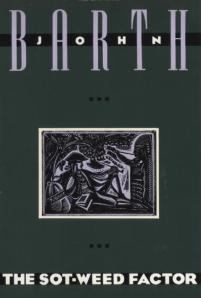 .)
.)
Ferries have such a long reach back in human history, both real and mythic, all the way back to Charon, who, the ancients claimed, brought the dead from the land of the living across the water to the underworld. This thought put me in mind of The Isle of the Dead, the title of both Arnold Bocklin’s painting and the tone poem by Rachmaninoff. The two are brought together in this video clip:
Happily, our little ferry trip took us to a beautiful land of the living. Officially founded in 1683, Oxford is a jewel of a town. As we walked along North Morris Street, we passed several beautifully tended homes and gardens. Several, though private residences,are designated historical landmarks.
In short order we attained Mystery Loves Company Booksellers.
Within its modest premises – it occupies a former bank building – can be found a veritable treasure trove of crime fiction titles and back issues of such magazines as Mystery Scene, Crime Spree, and the late lamented Mystery News. Was I in hog heaven? You betcha! 
While I was blissfully browsing, another customer came in. He and the proprietor/owner, Kathy Harig, got into a lively discussion of the novels of Icelandic author Arnaldur Indridason. I read Silence of the Grave, I put in, but was not crazy about it – too much angst involving the detective’s personal life. Now Karin Fossum – she is truly superb!
We mystery mavens live for spontaneous discussion outbursts like this one. And are we possessed of definite opinions? Speaking only for myself -indeed so! And yet – we are always hungry for recommendations from other mavens.
I was especially pleased to see that Kathy stocked a goodly number of titles from Felony & Mayhem. Here’s what I bought:
 Because I’ve long been curious about this Golden Age classic;
Because I’ve long been curious about this Golden Age classic;
 Same with this title, and I loved The Moving Toyshop;
Same with this title, and I loved The Moving Toyshop;
 Because I really liked The Accomplice;
Because I really liked The Accomplice;
 Because I thought Thunder Bay was outstanding, and because Marge gave a particularly compelling book talk on this title at a recent meeting of the Usual Suspects.
Because I thought Thunder Bay was outstanding, and because Marge gave a particularly compelling book talk on this title at a recent meeting of the Usual Suspects.
So: in the space of two weeks: a bookstore virtually devoid of staff (on a major holiday!), the staff that was actually present being bored, oblivious, and treating books like any other commodity; and a tiny little shop in a tiny little town on the water, filled with volumes known and loved by customers and owner alike.
Draw your own conclusions about what we are currently lumbered with, and the precious commodity that we’re in danger of losing.
It was the best of times, it was the worst of times…
Dick Francis
According to the itinerary for the Smithsonian Tour entitled Classic Mystery Lover’s England, this activity is scheduled for October 20:
Step into a Dick Francis mystery during a morning focused on horse racing. Witness a display of strength and discipline during the morning “gallops” and view these fine race horses up close at the stable. Over coffee with the trainer, take an in-depth look at the culture of horseracing in the Cotswolds, described in Francis’ novels, from his first, Dead Cert, to the most recent, Under Orders.*
Ron and I took this tour in 2006. At the time, we weren’t sure that this particular excursion would prove to be worthwhile. After all, we were not actually going to meet Dick Francis…
In the event, this visit turned out to be one of the highlights of the trip. We got to the stables early in the morning, when the horses are first taken out to be exercised. The Downs were enveloped in a fine mist, which gradually cleared as the sun grew warmer. Two of the stable’s employees took obvious pleasure in showing us around and answering our questions. A small dog – a Jack Russell terrier, I believe – was delighted to have such a large company of amiable humans on hand and darted back and forth among us.
In the chill air of morning, you could see the horses’ breath. They were beautiful animals.
******************************************
 Dead Cert (1962) was featured on the reading list prepared for out trip. Although I have long been a reader of Dick Francis’s books, I had never read this one, the author’s first, and was afraid it would come across as dated. My reservations turned out to be completely unfounded. Dead Cert was a joy to read: the character were engaging, as was the racing lore. The plot moved at lightning speed, like – well, like a steeplechase jockey and his mount headed confidently for a first place finish.**
Dead Cert (1962) was featured on the reading list prepared for out trip. Although I have long been a reader of Dick Francis’s books, I had never read this one, the author’s first, and was afraid it would come across as dated. My reservations turned out to be completely unfounded. Dead Cert was a joy to read: the character were engaging, as was the racing lore. The plot moved at lightning speed, like – well, like a steeplechase jockey and his mount headed confidently for a first place finish.**
Dick Francis was born in Wales in 1920. Prior to the First World War, his father had been a steeplechase jockey; after the war, he managed the W.H. Smith Stables in Maidenhead (Berkshire, England). Immersed from childhood in a world of horses and racing, Dick Francis became devoted to that world. It was an ardor born early and destined, in the coming years, to increase in intensity. He left school at the age of fifteen to pursue his own dream of become a jockey. The rest, as they say, is history; you can read about that history here.
****************************************
My own interest in horse racing was bequeathed to me by my father. When we were kids, he used to spend his Saturdays at the track. (In the way of children, I assumed at the time that this was what everyone’s Dad did on weekends.) These weekly excursions were his chief means of escape from the pressures of work. When Dick Francis began writing his novels of the racing world, my Dad was pleased to discover them. I like to picture the two of them encountering each other in the hereafter. If you see my Dad, Mr. Francis, be sure to greet him warmly. In later years, he was a great fan of yours.
*************************************
*This needs updating. As of now, the latest novel is Easy Money (2009), co-authored with Francis’s son Felix. Crossfire is due out in August of this year.
**The early 1960s were pivotal years for British crime fiction. Like Dead Cert, Cover Her Face, P.D. James’s first entry in her acclaimed Adam Dalgliesh series, came out in 1962. Ruth Rendell brought out the first Wexford novel, From Doon with Death, two years later.


